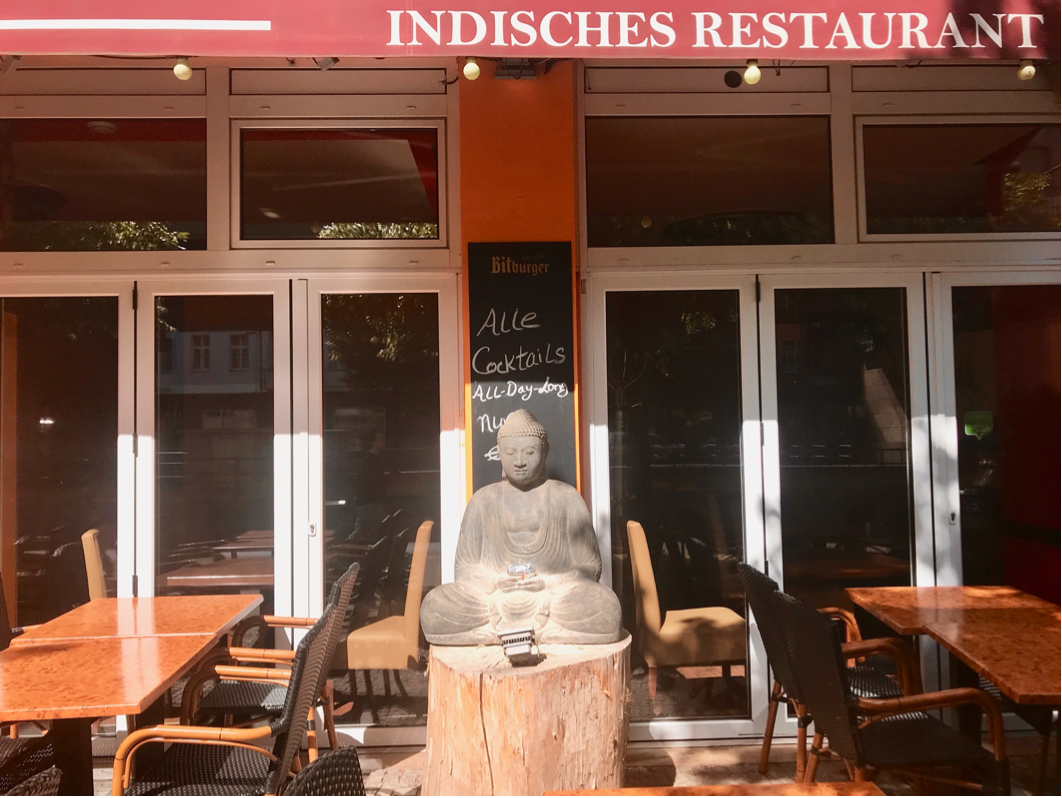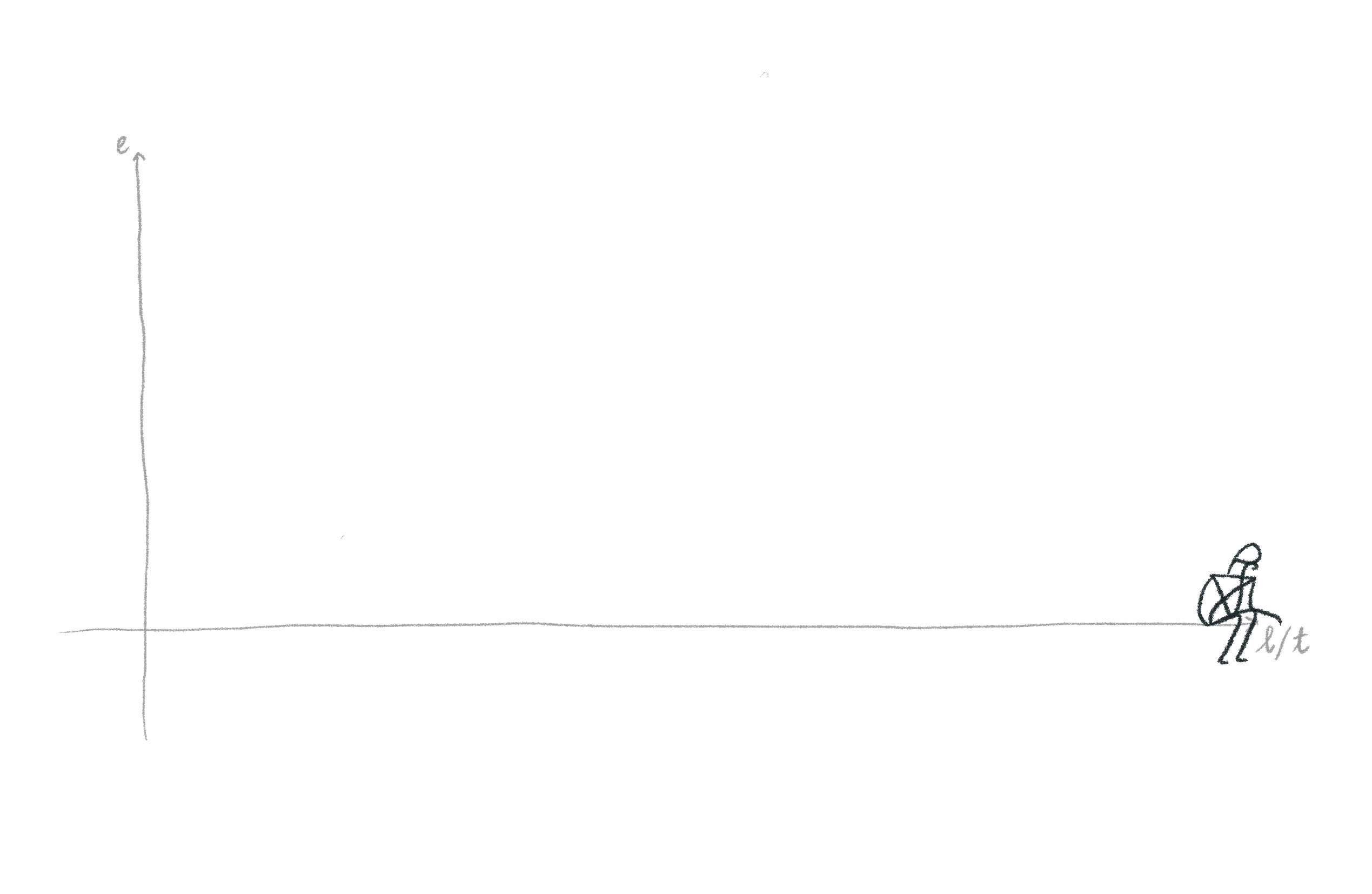EPISTOLARY ANCESTRIES
EXHIBIT #7:
Pilgrimage to Paradox
Graphic Essay (excerpt)
to Auguste Rodin (1840-1917)

With the so called ‘Hindu renaissance’ already on the rise within your lifetime, yoga will go on to become India’s largest global cultural export; followed very closely by Indian cuisine. In fact the two often make a paradoxical pair. Further down the street from my apartment in Berlin is this:

Now, cocktails notwithstanding, the Buddha, seated with spine supple and eyes closed, makes for a rather agreeable image of a yogi, you may think. Yet, you may wonder, how a dancing Śiva or a resting Viṣṇu stake claim to a practice of yoga?
To answer this we need only to turn round the corner from the restaurant, to full view of this:
![]()
The poster advertises one of Berlin’s many yoga studios which are all too often prefixed with a word abstracted from Patañjali’s Sanskrit text. The paradox of such modern marketing nomenclature is that while its purpose is to uniquely identify one practice from another, the word chosen to fulfil this purpose may be conceptually just as applicable to any other practice of yoga. This is because Patañjali’s text is not so much an exclusive or prescriptive one as much as it is a philosophical, even soteriological one. And this poster captures precisely this sense of the text in its chosen prefix: jiva(=lifetime)mukti(=emancipation). Emancipation (e) within lifetime (l/t) is the purpose of yoga.

The poster advertises one of Berlin’s many yoga studios which are all too often prefixed with a word abstracted from Patañjali’s Sanskrit text. The paradox of such modern marketing nomenclature is that while its purpose is to uniquely identify one practice from another, the word chosen to fulfil this purpose may be conceptually just as applicable to any other practice of yoga. This is because Patañjali’s text is not so much an exclusive or prescriptive one as much as it is a philosophical, even soteriological one. And this poster captures precisely this sense of the text in its chosen prefix: jiva(=lifetime)mukti(=emancipation). Emancipation (e) within lifetime (l/t) is the purpose of yoga.
The Buddha’s seated austerities, Viṣṇu’s eternal rest and Śiva’s perpetual motion are all experimental strategies geared towards emancipation within this lifetime, or another. And it is precisely this curve in time upon which lives are placed in quasi-circularity that sets all of them apart from your sculpture. For The Thinker, time is linear and life is placed but once upon this time. Little wonder then that he broods at the end of lifetime, over a posthumous probability of eternally infinite binaries.![]()

______________________
© Kiran Kumar 2021
